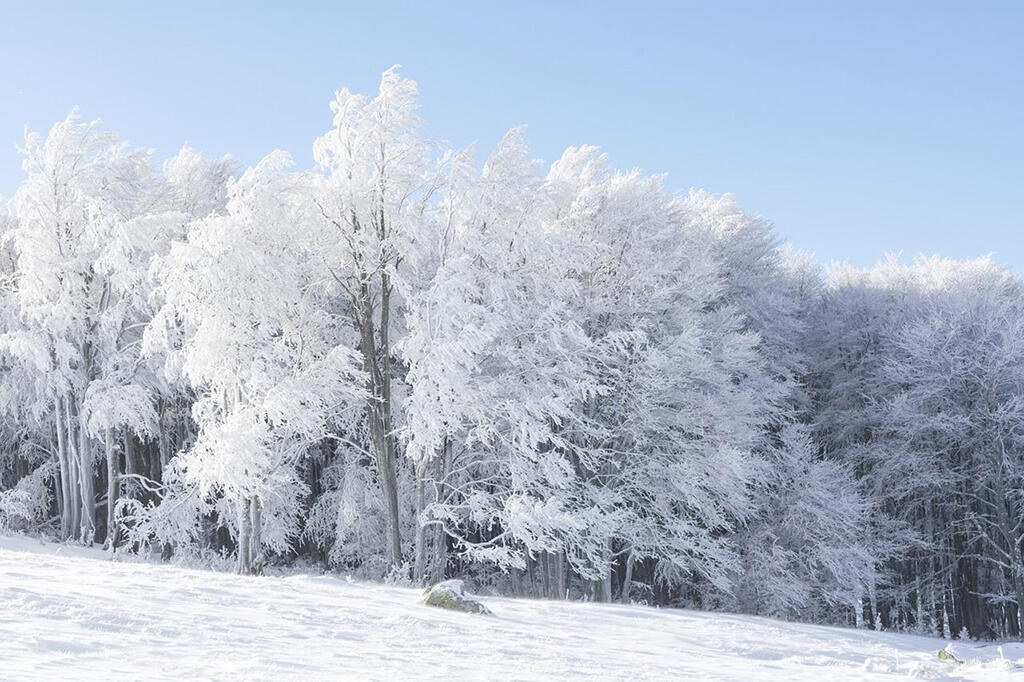
The Japan-Sea Polar-Airmass Convergence Zone (JPCZ) has been attracting attention in recent times as the main cause of heavy snowfall in the coastal regions of the Sea of Japan. On the other hand, the presence of a local discontinuity, which causes localized heavy snowfall in the region has been known for some time, but its connection to the JPCZ was extremely ambiguous.
A research group consisting of Professor Ryuichi Kawamura of the Faculty of Science, Kyushu University, Yuto Suzuki (a graduate student at the time of the research) and their colleagues has reproduced the torrential snowfall of early January 2021 that caused great damage, especially in the Hokuriku region, via a high-resolution numerical simulation using a meteorological model; they have succeeded in ascertaining that the areas of extreme snowfall on the coast become polarized due to the JPCZ and mesoscale coastal fronts, and identified for the first time that these fronts are a coastal weather phenomenon distinct from the JPCZ.
The research group focused on the period from January 7 to 11, 2021, one case of extraordinarily heavy snowfall in recent years. Over these four days, Joetsu City in Niigata Prefecture experienced tremendous snowfall; with depth increasing by 180 cm to reach a maximum depth of 249 cm on the 11th. It was suggested that this was closely related to coastal fronts in the area. From this, the research group carried out an experiment that reproduced the JPCZ and mesoscale coastal fronts using a high-resolution numerical simulation, and concurrently engaged in an experiment that modified the elevation of the Changbai Mountains (including the surrounding mountainous area). They compared the outcomes to investigate the formation process of mesoscale coastal fronts.
The JPCZ is a phenomenon in which air currents that have detoured around the Changbai Mountains converge over the leeward side of the Sea of Japan, and it was found that the mesoscale coastal fronts involve the air currents that have detoured around the Changbai Mountains forming a convergence zone via air currents flowing directly into the coastal region over the Sea of Japan and air currents that temporarily blow over Honshu and then flow into the area from inland. Through this, the group has explained the observational evidence that when a JPCZ event occurs, mesoscale coastal fronts are likely to manifest. Moreover, they were able to identify that this discontinuity is a mesoscale coastal front, because the convergence zone is accompanied by a remarkable equivalent potential temperature horizontal gradient within the atmospheric boundary layer, and a rising air current is generated along the potential temperature surface.
In the case of the air currents blown within the atmospheric boundary layer over the Sea of Japan, the equivalent potential temperature suddenly rises due to the large volume of heat and water vapor provided by the ocean surface, whereas the equivalent potential temperature doesn't change that much when it comes to the air currents flowing in from the land side after having temporarily blown overland, and so an equivalent potential temperature gradient is formed in the coastal area. Previous studies have pointed out that the formation of cold air pools due to the sublimation cooling of snow contributes to the increased amount of snowfall in the Hokuriku region, and outcomes obtained from a sensitivity experiment that removed the sublimation cooling of snow did not contradict these studies. Moreover, the group clarified, for the first time, that the notion of the contribution of land breezes caused by an efflux of masses of cold air from the mountainous regions, which had been previously suggested with regard to the increased volume of snowfall, was insufficient. The origins of these land breezes was shown to lie in the air currents that converge on the coastal front from inland, having detoured around the Changbai Mountains and temporarily blown over Honshu.
Professor Kawamura commented, 'The band of snowfall that accompanies the Hokuriku discontinuity is spatially small, but the influx of cold air in the coastal regions along the Sea of Japan and the air currents from inland mean that its strength and position change from one moment to the next. It was very difficult to properly reproduce this behavior. It is also possible to increase the horizontal resolution of the meteorological model to a higher resolution (e.g. 1 km), but doing this is difficult because we can't simply say that the reproducibility of the volume of snowfall improves; we need to steadily continue verifying why the reproducibility worsens.'
■ Cold air pool: A cold mass or layer that forms near the ground surface as a result of the downward flow generated when the evaporation of raindrops and sublimation of snow causes the surrounding air to cool. The importance of cold air pools in training (areas of repeated rain) that causes heavy rain has also been pointed out.
This article has been translated by JST with permission from The Science News Ltd.(https://sci-news.co.jp/). Unauthorized reproduction of the article and photographs is prohibited.




